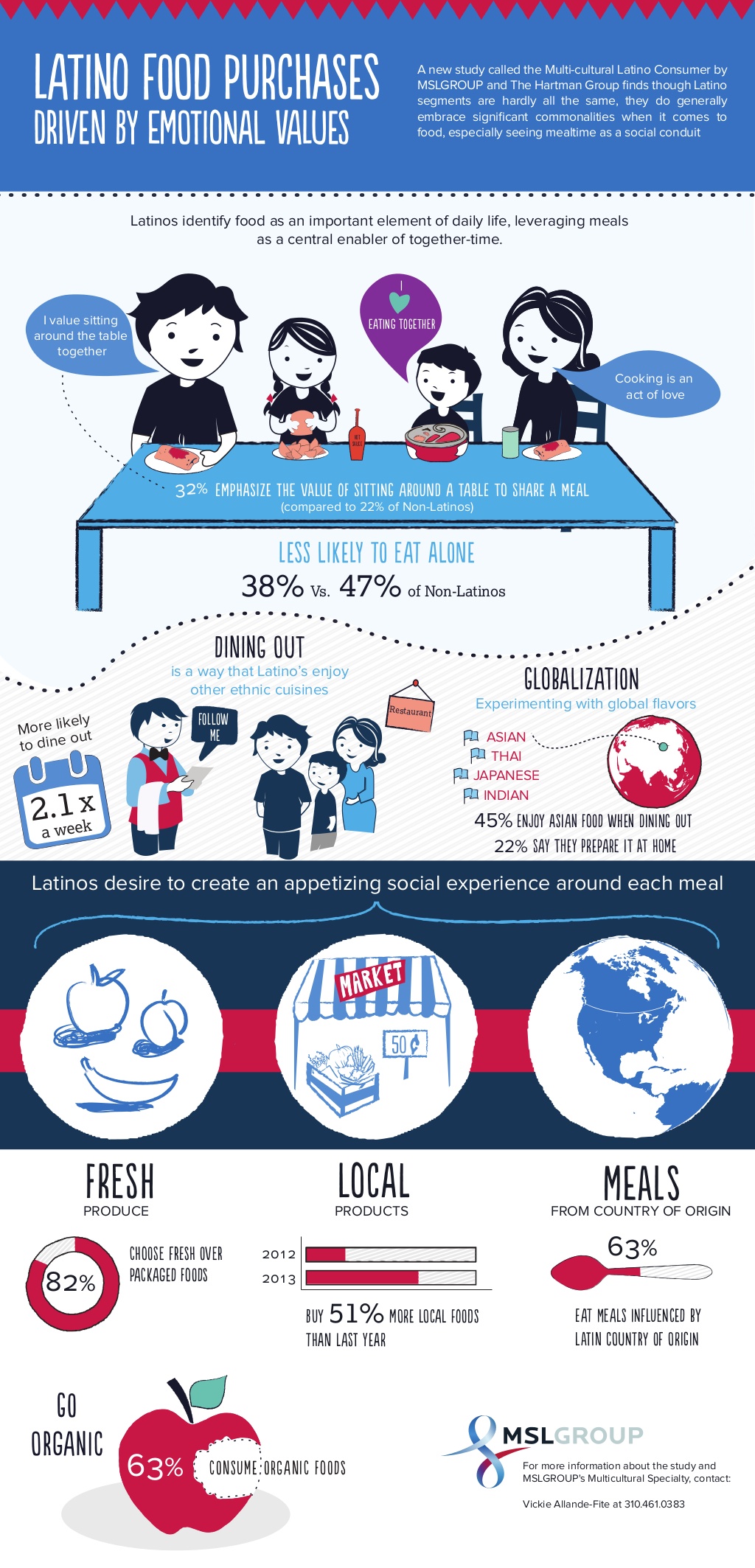 By Hope Gillette, Saludify
By Hope Gillette, Saludify
According to the data, though the Latino population in the U.S. is diverse, there are significant commonalities when it comes to food; specifically, Latinos prefer fresh, locally-grown, whole ingredients for their traditional dishes.
These factors that influence Latino food purchases could provide significant marketing opportunities for food and advertising companies.
“Food brands looking to make a Latino family’s shopping cart need to recognize and respect what motivates the purchase – the family experience,” Vickie Allande-Fite, multi-cultural practice leader, said in a press release. “Working with Hartman, we are confirming and developing insights to provide clients with strategic, relevant ways to capture awareness and elevate engagement with U.S. Hispanics.”
Latino food purchases and eating healthy
The results from the new study prove that Latinos do want to make healthy food choices despite previous data suggesting there are a number of barriers standing in the way. Access to fresh produce and meat, cost and general knowledge regarding healthy choices have all previously been cited as hurdles Latinos face when it comes to eating healthy.
An earlier study in 2013 published in the American Journal of Preventative Medicine looked at the effects of poverty on the Latino diet. The research sought to showcase how poverty generally led to a diet full of calorie-dense, low-cost processed food. Diets of this nature have been linked to a higher risk of obesity, type 2 diabetes, which disproportionately affect the Latino community.
What experts found, however, was that once educated on where and how to find whole and organic foods, Latinos—regardless of income—were more likely to make healthy choices. The findings were consistent even among Spanish-speaking Latinos, suggesting that it was mainly nutrition education which stood between Latinos and a healthier diet.
But while nutritionally-educated Latinos will make healthy food choices, the missing piece of the puzzle when it comes to reaching Latinos about food choices is the family connection. Healthy eating is important, but only if it can be done in a way which still promotes the close relationship typical of the Latino family.
“Cooking is a labor of love and the study affirmed how gatherings are a treasured everyday opportunity to savor authentic flavors and enjoy recipes passed down for generations,” said Laurie Demeritt, CEO at The Hartman Group, in a press release. “To market food focused on nutritional strengths fails to capitalize on its greater role as being a social conduit. Meal time helps keeps Latinos stay connected to one another as well as to their culture and traditions.”
Other findings in The Multi-Cultural Latino Consumer study on Latino food purchases included:
- Latinos are less likely than others to eat alone (38 percent to 47 percent).
- 32 percent of Latinos believe having a family meal is important, compared to 22 percent of non-Latinos.
- Latinos see dining out as a way of enjoying other ethnic cuisine.
- Latinos are more likely to dine out compared to non-Latinos.
- 82 percent of Latinos chose fresh foods over packaged foods.
- 63 percent of Latinos consume organic foods.
- 63 percent of Latinos eat meals influenced by their Latin country of origin.

Hope Gillette is an award winning author and novelist. She has been active in the veterinary industry for over 10 years, and her experience extends from exotic animal care to equine sports massage.
This article can also be seen at NewsTaco.

Recent Comments